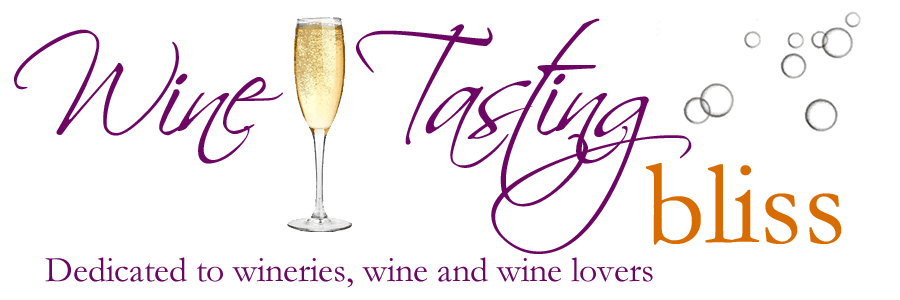Wine tasting is wonderful. Sampling the widely-varied
offerings from wineries is our favorite pastime But many times a critical
component of the tasting experience is overlooked: the wine glass itself. So
for this Toast Thursday, we say cheers to the humble wine glass.
offerings from wineries is our favorite pastime But many times a critical
component of the tasting experience is overlooked: the wine glass itself. So
for this Toast Thursday, we say cheers to the humble wine glass.
Wine glasses come in every size, shape and color under
the sun. Which glass is right for a particular wine? Most wine tasters agree
that the glass itself should be clear. Otherwise, how can the lovely color of
the wine be appreciated when masked by a colored or opaque glass? But beyond
that simple rule, things get a bit more complicated.
the sun. Which glass is right for a particular wine? Most wine tasters agree
that the glass itself should be clear. Otherwise, how can the lovely color of
the wine be appreciated when masked by a colored or opaque glass? But beyond
that simple rule, things get a bit more complicated.
Most wine lovers accept that different wine glasses are
best for different types of wine. Based on the characteristics of the wine,
there is usually a particular glass design that can best highlight its positive
features. Most of us end up stocking four basic styles in our cupboards.
best for different types of wine. Based on the characteristics of the wine,
there is usually a particular glass design that can best highlight its positive
features. Most of us end up stocking four basic styles in our cupboards.
White wine is typically enjoyed in a small, tapered
glass. I won’t lie here; the term small is more a relative term than a
hard-and-fast rule. Holding 6-10 ounces, the wine has enough open space in the
top of the bowl to let the subtle aromas swirl about, but not so much space to
lose the aroma completely. Since white wine is served around 55 degrees, you
don’t want to pour more than you can sip before the wine warms up.
glass. I won’t lie here; the term small is more a relative term than a
hard-and-fast rule. Holding 6-10 ounces, the wine has enough open space in the
top of the bowl to let the subtle aromas swirl about, but not so much space to
lose the aroma completely. Since white wine is served around 55 degrees, you
don’t want to pour more than you can sip before the wine warms up.
Red wine can use a somewhat larger wine glass. You have
stronger aromas, so a larger air space is good. The wine is served about 10
degrees warmer, too, so there’s less concern about the wine losing its chill.
The bowl is larger, making an artful swirl of the ruby liquid easier and
prettier at the same time.
stronger aromas, so a larger air space is good. The wine is served about 10
degrees warmer, too, so there’s less concern about the wine losing its chill.
The bowl is larger, making an artful swirl of the ruby liquid easier and
prettier at the same time.
Champagne flutes are the narrowest of the wine glass
family. The precious champagne bubbles leap out from the top surface of the
champagne, so you want as narrow of the top surface as possible. That means you
need a tall, skinny glass or suffer many repeat trips to the pourer or flat
wine. Neither option is a good one, so save the wide-brim glasses for marguerites
and keep the narrow, tapered flutes to the front of the cupboard for easy
access. At least, that’s the priority order in our household!
family. The precious champagne bubbles leap out from the top surface of the
champagne, so you want as narrow of the top surface as possible. That means you
need a tall, skinny glass or suffer many repeat trips to the pourer or flat
wine. Neither option is a good one, so save the wide-brim glasses for marguerites
and keep the narrow, tapered flutes to the front of the cupboard for easy
access. At least, that’s the priority order in our household!
For brandy and port, a smaller, nearly spherical bowl on
a short stem is the glass design of choice. The other wines are best in
long-stemmed glasses so that warmth from our hands doesn’t affect the wine.
With brandy and port a little body heat is a good thing, so the stem is short
so that our hand can cradle the lovely nectar and help the heady aromas waft up
to our nose.
a short stem is the glass design of choice. The other wines are best in
long-stemmed glasses so that warmth from our hands doesn’t affect the wine.
With brandy and port a little body heat is a good thing, so the stem is short
so that our hand can cradle the lovely nectar and help the heady aromas waft up
to our nose.
So our cupboard has these four basic shapes of wine
glass. Most of them bear the emblem of a local winery, which helps keep the
memory of wonderful tasting tours fresh. What’s on your shelf?
glass. Most of them bear the emblem of a local winery, which helps keep the
memory of wonderful tasting tours fresh. What’s on your shelf?
About the Author: John grills a mean steak and is always in the market for another wine fridge. Believes that if a winery has more than 10 employees, it's probably too big. Buys wine faster than he drinks it, but who cares?





